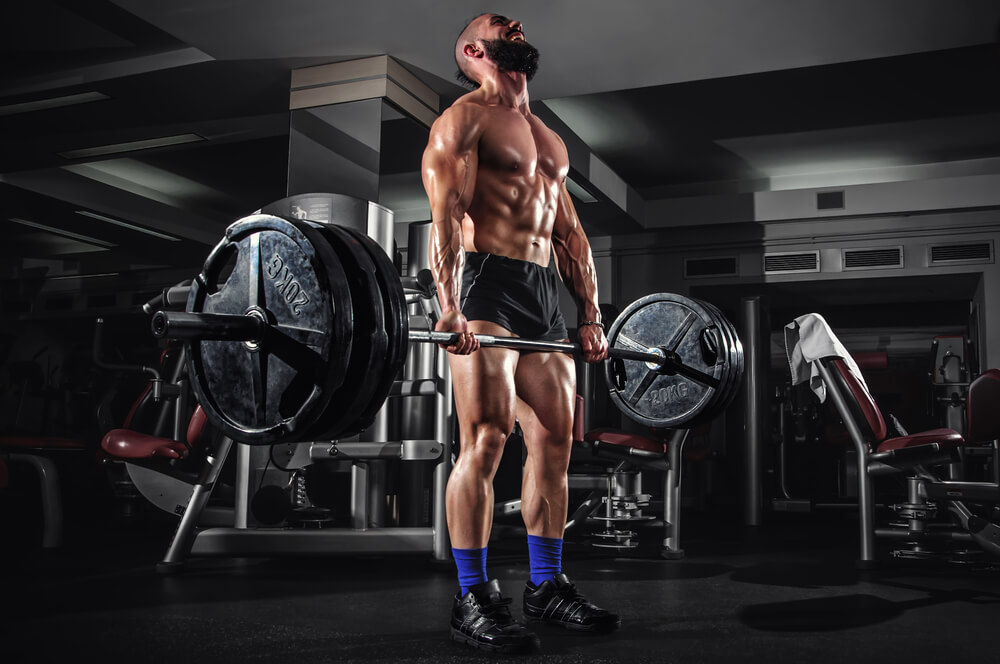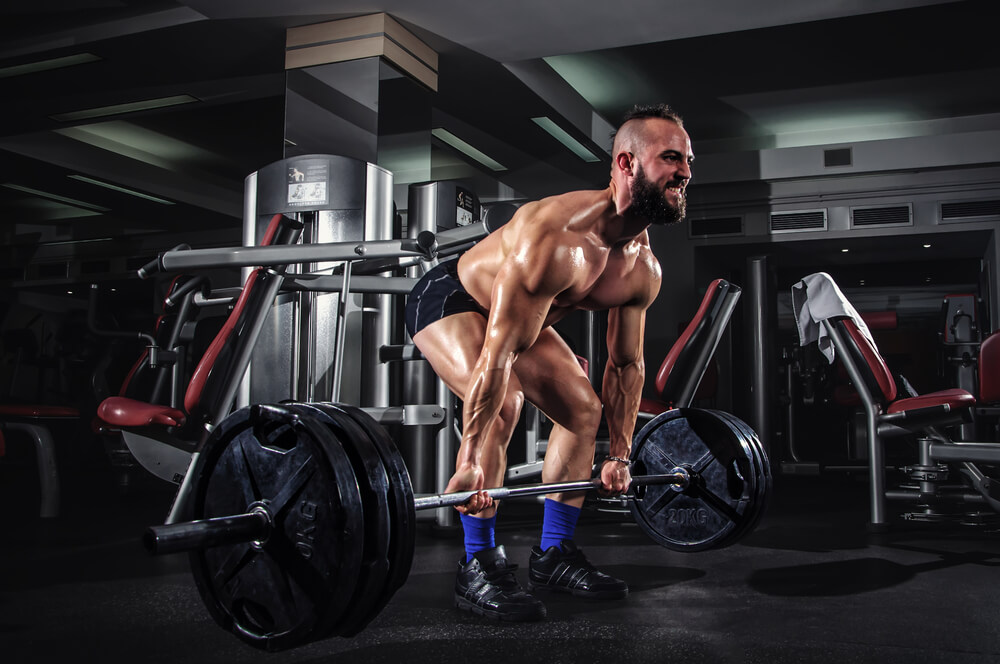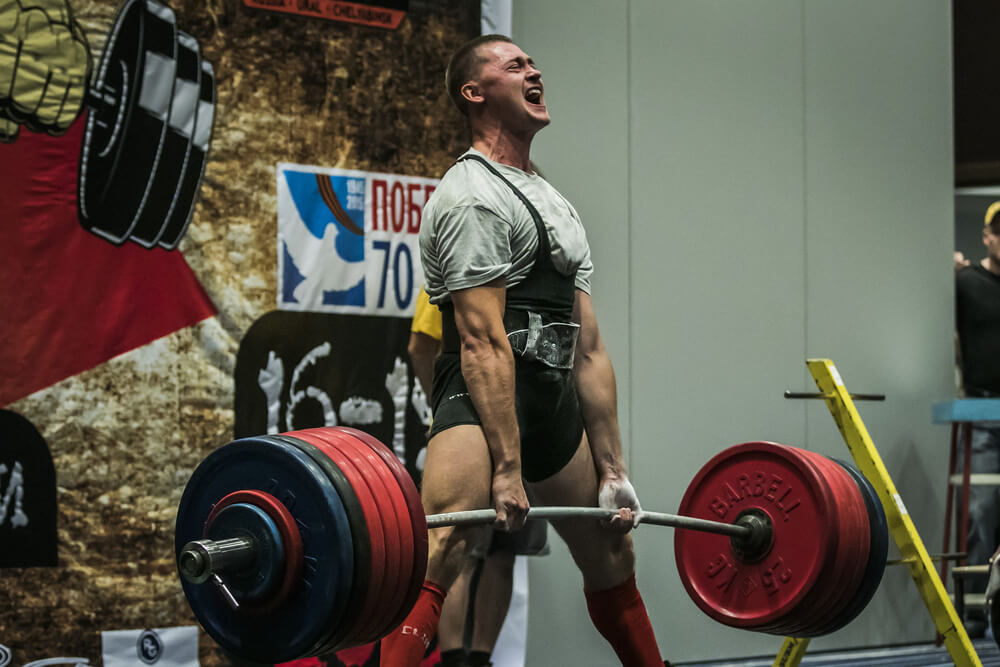
You people see it all the time on Instagram, Facebook, and various other social media platforms, of people doing deadlifts. You watch strongmen competitors deadlifting over 500 lbs.
It is part of the big three and an extremely important lift for anyone who is serious about their overall fitness and competitors.
But why is it so important?
Why is it one of the best bodybuilding workout program?
The Deadlift Considered One Of The Best Full-Body Lift?

Benefits Of Deadlifts
Deadlift is a full body workout. It works everything from calves, thighs, core and all the way to the tips of your fingers. If you think I am exaggerating, well you are wrong. So much research has been done on the benefits of deadlifts, all you have to do is look up the research and you’d be blown away.
Testosterone increase, increase in libido, overall strength increase etc, you get the picture.
Now let’s explore the different types of deadlifts.
Different Types Of Deadlifts
We will look at the different variations of deadlifts and the benefits of each one.
-
Sumo Deadlift
The sumo deadlift is done by placing your feet at a wider stance with your hands on the inside of your thighs. The sumo deadlift can be performed with an emphasis on the quads or hips. It also allows you to lift heavier loads.
Sumo deadlift works your entire backside to include glutes and hamstrings.
-
Hex or Trap Bar Deadlifts
By using the hex bar, you step into the bar and then you can change the mechanics behind the deadlift. The weight is evenly distributed along the bar.
The Trap Bar deadlift works muscle groups such as quads, hamstrings, glutes, spinal erectors, obliques, abdominals and lower back muscles.
-
Snatch Grip Deadlift
In the snatch grip deadlift, your hands take on a wider grip. The snatch deadlift is a type of Olympic lifting which mainly works the hamstrings. The snatch deadlift acts to strengthen the pull of the snatch.
The other muscles the snatch grip deadlift works are your traps, upper back, hamstring, and glutes.
-
Romanian Deadlift (RDL)
To perform an RDL, hold a bar at hip level with palms facing down grip. Your shoulders should be back, your back slightly arched or neutral position, and your knees slightly bent.
You pick up the bar like you would with a conventional deadlift to begin the RDL. At the top, you begin your range of motion down. Keep the bar close to your body during the entire lift.
At the bottom of your range of motion, without touching the floor, return the starting position by driving the hips forward to stand up tall.
The RDL works your entire backside, from your hamstrings to your shoulders.
-
Deficit Deadlift
A deficit deadlift is performed by placing a couple of plates on the floor, approximately 1-3 inches off the ground, and then step onto them. Your feet should be about hip to shoulder width apart. Then perform a conventional deadlift.
There are several things to keep in mind when performing this deadlift. Proper form is very important, as with any lift. Don’t let your ego take over and get yourself hurt. Make sure you are in a neutral position when performing the lift and you are bracing and rooting correctly.
The idea behind a deficit deadlift is a long range of motion. It will strengthen your conventional deadlift because you are putting yourself at a biomechanical disadvantage.
The deficit deadlift works your lower back.
-
Rack Pulls
Rack pulls seem to be underutilized in the gym these days. Some people have the misconception that it is useless to add to your programming. It is great for helping build a strong back and also helps with the second phase of the deadlift when you get the bar off of the floor. The second phase of the deadlift is when you lift the bar off the floor and the bar is at the level of your knees.
By eliminating the first phase of the deadlift, you can concentrate on building a strong back.
To perform a rack pull, set the pins at the squat rack down about knee height. Place the bar on the rack and add weight. Your feet should be hip to shoulder width apart and
-
Conventional Deadlift
Of course, there is the good old deadlift. Just straight up classic powerlifters, bodybuilders, and athletes go to exercise for raw strength!

How To Do A Conventional Deadlift?
With the bar on the floor, overhand grab the bar, shoulders back, feet shoulder width apart and then lift!
What does it work?
Everything!
Some have even said they felt their muscles from their calves to their shoulders working hard to pick up the barbell.
Common Mistakes
As with type of lift, the form is everything. If your form is off, you risk serious injury that could take you out of the gym for a long time or forever! To avoid those, I’ll give you some tips. I’ll list some of the common mistakes and then discuss how to fix them and then go over three very important concepts with lifting.
So first let’s look at some of the common mistakes:
Rounding of the back (HUGE NO NO)
Pulling the bar up rather than “pushing down the earth” (I will explain this one further)
Ego (Leave your ego at the door!)
Extending your legs first
Jerking the bar
These are some of the mistakes I have seen people do. Go on youtube and take a look at some of the nightmares of poor techniques on there. You can practically hear their spine snap because their form is so lousy.
Let’s start with the obvious, stretching! It is very important in any sort of physical activity you do you stretch. Stretch before and after stretch!
- Rounding the back- your back should be in the neutral position the entire time. When you round your back you risk serious injury and that means you are lifting way too more than you can handle right now.
- Pulling the bar up rather than “pushing the earth down.” What do I mean by this. Some misconceptions about the deadlift is that it is a strictly a back exercise. That is not true. When performing a deadlift think of pushing rather than pulling. The initial part of the lift is all legs; your arms just hold the bar. Keep your arms straight and try not to bend your arms. Of course, if you’re doing straight leg deadlift then that is a little different.
- Your ego, very simple, leave it at the door. So what if you see someone deadlifting 500 lbs. That person got there by working hard at it. That person started as a beginner just like you. You will eventually get there. Don’t rush it. Do it right.
- Extending your legs first is kind of like rounding your back. When you extend your legs first before performing the deadlift you risk rounding your back, and injuring your back. You should be moving in one fluid motion.
- Lastly, jerking the bar, you see them at the gym, you see people get to the bar and jerk the bar, struggling to lift it, bend their arms, fight to get the bar up. Keep your arms straight. Think of your arms as just a shelf holding the bar. That is all.
I had stated above that there are three important concepts when it comes to lifting. They are breathing, rooting and bracing. They are probably the three most important part of lifting.
- Breathing
If you watch enough videos of Olympic athletes prepare for their lifting, you see them take these deep breaths before they commit to the lift. They take one final breath and execute their lift.
A common mistake, when it comes to breathing, is when you take a deep breath, you breathe into your chest.
In reality, you should breathe into your stomach. The reason for that is so when you take that deep breath it forces your organs to move over so you can stabilize your spine when you brace. I will get into bracing in a minute. I know it doesn’t “look good” when your stomach is pushed out. In the world of self-image and having that “perfect body”, breathing into your stomach isn’t an ideal look but it’s about doing your lifts safely rather than sloppy. How should your stomach look when you take that deep breath? It should look like a basketball.
When taking your deep breath, think of breathing into the bottom of your stomach to the top.

How To Work On Your Breathing?
There are several exercises you could do to help you work on your breathing. One of my favorite ones and lying on the floor face down. Take a deep breath into your stomach and try to expand your belly all the way around. Think of an alligator and think of what it looks like when it breaths and mimic that.
- Rooting
What is Rooting?
Rooting is getting a solid foundation between your foot and the floor. Many lifters do not really think about how important this connection is, especially when doing lifts like the squat and deadlift. When executing those lifts, we drive against the floor to move the weights upward. The feet must be “rooted” correctly to transfer maximum power up from the bottom of your feet, up to the bar.
Rooting also causes the activation of the muscles used in the lift just by rooting your feet to the floor.
So when you get under the bar and begin your squat, for example, you constantly remind yourself “knees out” or “sit back.” Those are great reminders to help you “root” to the floor.
How Does Rooting Start?
We always hear from trainers to “drive with your heels”, that is correct in one part of the lift but it sometimes causes us to forget about the rest of the foot.
So you get up to the bar, whether you are squatting or deadlifting, Once in position for the lift, you will have weight through the whole foot but most of the weight will still be on the heels. You will then spread our toes out as wide as you can and grip the floor with them. You are now trying to grip the floor with the whole foot and not just the toes. Another way to think about this is to think of as a bird standing on a branch. A bird grips the branch with it’s talons. So now picture yourself on that branch and you are gripping the branch with your toes and rest of your foot.
If this is done correctly all the muscles in your legs will activate. Putting the foot in the correct position and rooting it to the floor automatically engages all the muscles needed to generate the power you need to lift.
- Bracing
Bracing is a key building block in the foundation of strength. It is one of the most important aspects of lifting and is an easy concept but usually takes a fair amount of work and practice to master.
I am going to list some common mistakes I have seen when it comes to bracing:
- People breathing into their lunges vs their stomachs. Like I wrote above, you need to breathe into your stomach.
- Some gym-goers think breathing is bracing, which is not the case.
- People sucking in their abs in and trying to tighten them. This is very dangerous and it takes stability away from your core.
How do you Brace?
When you breathe into your stomach you have to expand all the muscles of the midsection while pushing them all out as far as possible. This does not mean pushing your belly out. Your whole midsection should be expanding to include your sides and back. It’s just like blowing up a balloon. Bracing occurs when you actively expand your entire midsection out in all directions to include your back to help stabilize your spine.
Conclusion
Deadlift, one of the mothers of all lifts, is such an important part of any athletes training. It works your entire body when done right. I have heard people tell me that their whole body is sore after deadlifting. It is a full body workout.
You have read about some of the benefits, the different types of deadlifts, some of the common mistakes and some important concepts when it comes to lifting. Build deadlifting into your program and you will see your strength skyrocket!
-Ayman Kafel
Latest posts by Terry M (see all)
- Garage Gyms - Aug 1, 2018
- Kettlebells – Why They Should Be Added To Your Routine. - Jul 24, 2018
- Weight Belts: What Are They Really For? - May 31, 2018









[…] 7, 2018 Facebook Twitter Google+ Pinterest WhatsApp var td_screen_width = window.innerWidth; if ( td_screen_width >= 1140 […]
[…] via- https://gymjunkies.com/deadlift-the-best-full-body-lift/ […]
[…] lower portion of the body while blasting your shoulders and upper back. You can combine this with a deadlift in the same day, as the deadlift is another exercise that works multiple muscle […]
[…] Barbell deadlifts held at your side can work, although with the hex bar you can load up more weight, which helps with strengthening your traps and building the kind of muscle you’re interested in. […]
[…] variation of the traditional deadlift brings the weight off of the ground. Deadlift the weight off the ground, then hold it at your […]
[…] If you’re looking for a way to get a bigger and stronger back, you need to start performing moves that specifically target your back. Your lats are some of the more difficult muscles to hit, yet a stronger back helps with not only other upper body moves but some lower body moves as well (like the deadlift). […]
[…] Barbell deadlifts held at your side can work, although with the hex bar you can load up more weight, which helps with strengthening your traps and building the kind of muscle you’re interested in. […]
[…] if you’re lifting every day and even sprinkling in some cardio you’re going to use the body’s natural storage of […]
[…] lower body but will help burn calories at the same time. Beyond the standard squats, leg presses, deadlifts, and leg presses, what kind of leg exercises should you be […]
[…] lower body but will help burn calories at the same time. Beyond the standard squats, leg presses, deadlifts, and leg presses, what kind of leg exercises should you be […]
[…] lower body but will help burn calories at the same time. Beyond the standard squats, leg presses, deadlifts, and leg presses, what kind of leg exercises should you be […]
[…] lower body but will help burn calories at the same time. Beyond the standard squats, leg presses, deadlifts, and leg presses, what kind of leg exercises should you be […]
[…] lower body but will help burn calories at the same time. Beyond the standard squats, leg presses, deadlifts, and leg presses, what kind of leg exercises should you be […]
[…] You don’t need to use a barbell to perform the deadlift. […]
[…] barbell deadlift works so much more than just your back though. Basically, it works everything from your legs to […]
[…] deficit deadlift is similar to the traditional deadlift. The only difference is that it’s done standing on a platform of about three […]
[…] deficit deadlift is similar to the traditional deadlift. The only difference is that it’s done standing on a platform of about three […]
[…] deficit deadlift is similar to the traditional deadlift. The only difference is that […]
[…] deficit deadlift is similar to the traditional deadlift. The only difference is that […]